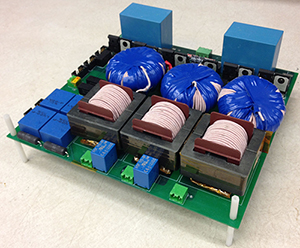LIBRARY
Design and Implementation of Interleaved Vienna Rectifier with Greater than 99% Efficiency

Paralleling switches or converters are commonly used to achieve higher efficiency and better thermal management. In such practices, interleaving the gate signals of several sub-converters instead of simply gating them simultaneously can further enhance efficiency and power density. The cancellation effect among the interleaved sub-converters allows for smaller input filters. In other words, to achieve the same power quality with the same passive components, the switching frequency of each sub-converter in the interleaved systems can be lower, which lowers switching loss. Additionally, applying the interleaving technique may reduce EMI filter size due to its cancellation effect among sub-converters. Thus, the interleaved Vienna rectifier, which merges the advantages of the Vienna rectifier and interleaved systems in achieving high efficiency, is discussed.
In this paper, the design of a 3 kW, three-phase, two-channel interleaved Vienna rectifier with greater than 99% efficiency is presented. The converter efficiency is optimized for 230 V, 360~800 Hz input voltage, 650 V output voltage and 3 kW output power under a power quality requirement from a standard DO-160E. The operation principle of the interleaved Vienna rectifier is presented, with special attention given to circulating current generation and suppression. A comprehensive design procedure for the interleaved Vienna rectifier, including a design flow chart, loss estimation for the converter, design guideline of interphase inductors and semiconductor selection is described. A converter prototype is built and experiment results are shown, verifying the validity of the design procedure.























































































